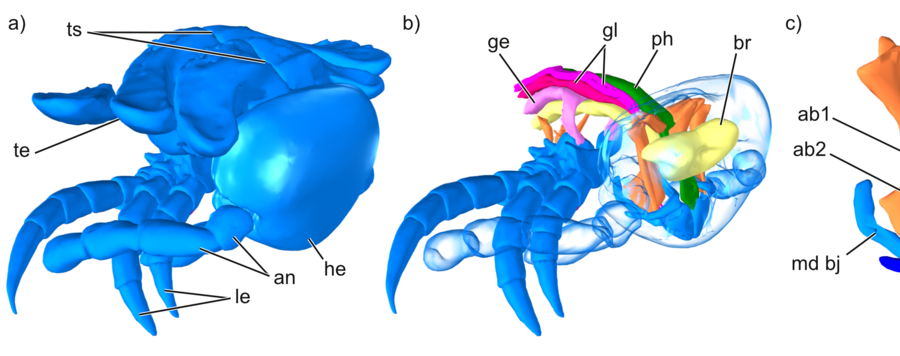Quick facts
Project title:
Elucidating the phylogeny of the Diplopoda: microCT-scans, morphology and morphometrics of all millipede orders
Object of research:
Myriapoda, Diplopoda, Millipedes, Mikro-CT, millipede
Description
This project is conducted in close cooperation with Dr. Alexander Blanke (University of Cologne).
Millipedes (Diplopoda) are among the oldest terrestrial multicellular organisms, and with 12.000 described species the third largest class of land arthropods. As detritivores they play an important role for decomposition and soil formation. Despite their phylogenetic age and their obvious value to understand the early colonization of the land, the diplopodean morphology is severely understudied. This is especially true for the rare representatives among the 16 millipede orders such as Siphoniulida, Glomeridesmida, or Siphonocryptida. In fact, numerous authors complained that our morphological knowledge of the Diplopoda is at the same level reached for Hexapoda, Crustacea, and Arachnida already 100 years ago. With this project, we will to partly overcome this deficit in morphological knowledge.
Using a combination of synchrotron micro-computed tomography and histology, we have the tools at hand to take our knowledge of the morphology of millipedes to the next level. Our aim is to first provide a digital, open-source annotated library of synchroton micro-CT scans and 3D-models for more than 48 representatives of all main groups within Diplopoda, which will cover large parts of their morphological and phylogenetic diversity. Secondly, we will use this comparative morphological information to contribute to a well-founded phylogeny. Within this framework, we will especially focus on morphological character systems, such as mouthparts, endoskeleton, genital structures, and tracheal pouch configuration. In a third step, we will use a geometric morphometric approach to quantitatively investigate evolutionary shape variations within the chosen character systems with regards to (a) phylogenetic signal, (b) evolutionary allometry and (c) potential correlation of shape variation with various ecological factors. This will increase our understanding of morphological changes in response to the particular environment relevant for millipedes, which will enable us to reconstruct the ancestral conditions under which ancestors of the Diplopoda first colonized land. Our contribution will provide information about key morphological adaptations for a species-rich group of arthropods.
Location







